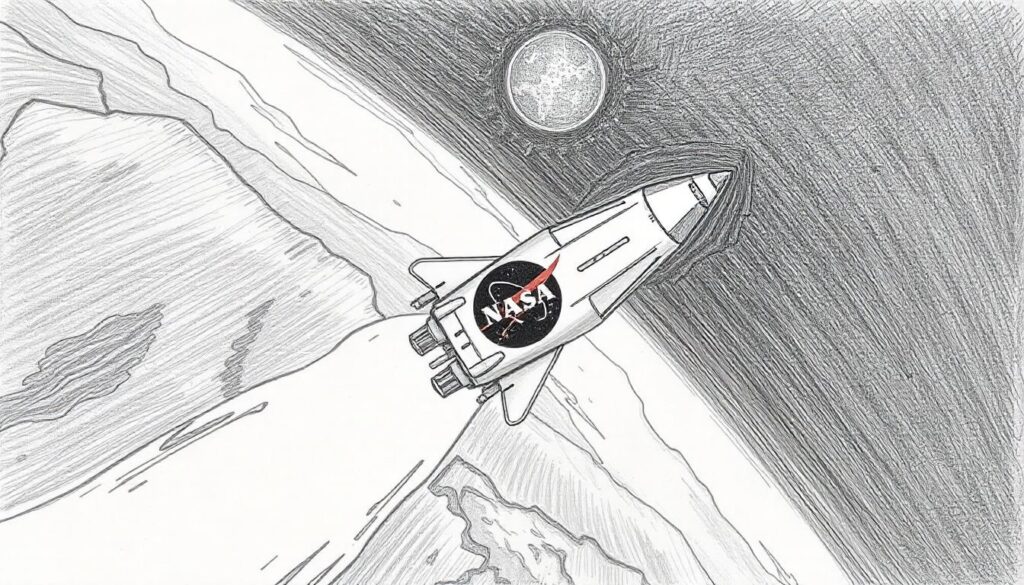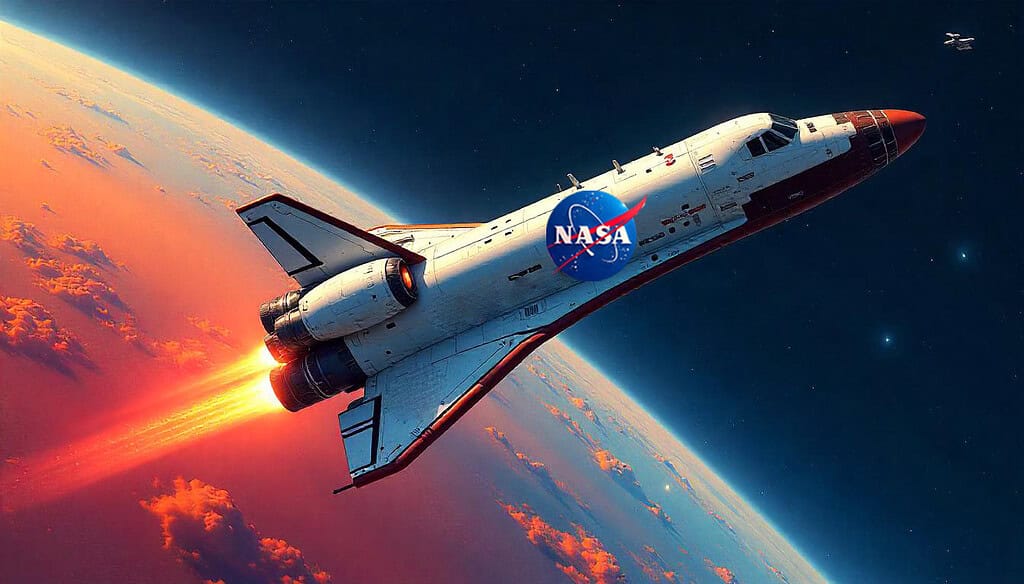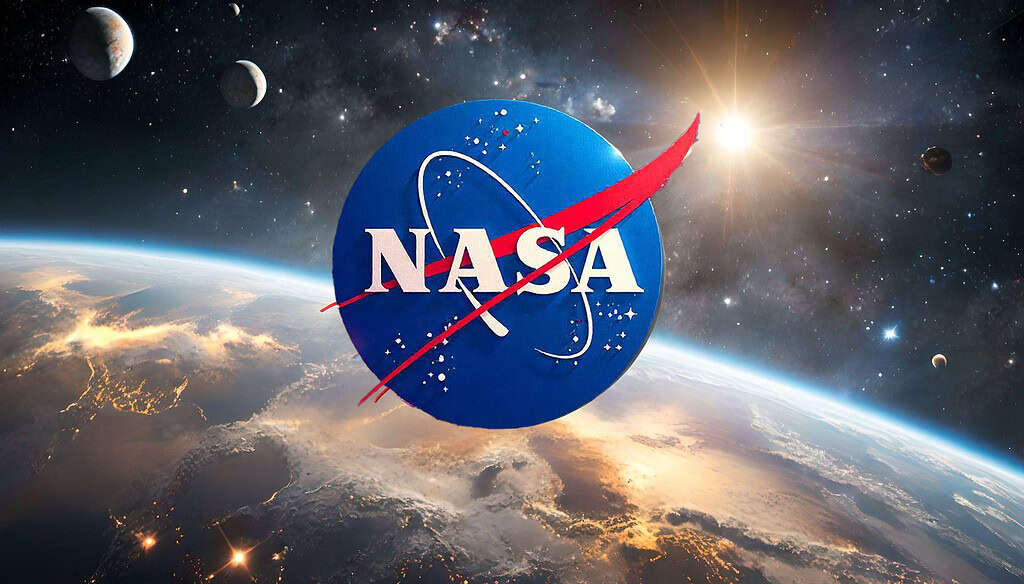Table of Contents
Why Becoming A NASA Aspirant

Becoming a NASA aspirant represents a goal driven by a profound curiosity, a passion for exploration, and an eagerness to expand the horizons of human understanding. As the premier space agency in the United States, NASA has consistently led the way in scientific innovation and technological progress. For individuals with a fervent interest in space, science, or engineering, the aspiration to join NASA offers a distinctive chance to engage in missions that enhance our comprehension of the universe.
A primary motivation for becoming a NASA aspirant is the chance to participate in pioneering projects that could significantly alter the trajectory of history. NASA engages in some of the most ambitious scientific initiatives, including the exploration of Mars, the investigation of the outer solar system, and the examination of distant galaxies. These missions not only aim to address fundamental inquiries about space but also tackle intricate technical and engineering challenges that can result in innovations beneficial to society on Earth.
Moreover, being a NASA aspirant opens the door to collaboration with some of the brightest minds in the world. The work environment at NASA is both intellectually stimulating and collaborative, bringing together experts from various disciplines to address complex problems. Whether involved in a mission to return astronauts to the Moon or in developing new technologies for space exploration, working at NASA signifies being part of a team committed to enhancing human knowledge and capabilities.
Nevertheless, the journey to becoming a NASA aspirant is challenging. It necessitates a robust educational foundation, particularly in science, technology, engineering, and mathematics (STEM), along with a dedication to lifelong learning. The obstacles are numerous, ranging from fierce competition to the technical complexities inherent in space exploration. However, for those who are passionate about contributing to advancements in space science and exploration, the rewards of such an endeavor are immensely gratifying.
A desire to become a NASA aspirant signifies a commitment to a future where space exploration may yield groundbreaking discoveries, potentially including the existence of life beyond our planet. The ramifications of NASA’s endeavors reach far beyond mere scientific exploration; they play a crucial role in shaping the trajectory of humanity. Engaging in space exploration challenges the boundaries of what is achievable, and being affiliated with NASA entails an active role in this remarkable journey.
In conclusion, becoming a NASA aspirant is about more than just pursuing a career – it represents a contribution to humanity’s most significant undertaking: the quest to explore the unknown. For individuals who are fervent about space, science, and discovery, the chance to become part of NASA transcends a career aspiration; it is a profound calling.
What NASA Looks in An Aspirant

NASA seeks a diverse array of attributes in candidates, ensuring that those who become part of the agency are not only exceptionally skilled but also equipped to tackle the distinctive challenges associated with space exploration. While a solid technical foundation and a robust educational background are fundamental, NASA also prioritizes various personal and professional characteristics that distinguish a successful NASA aspirant.
Primarily, a NASA aspirant must demonstrate a high level of curiosity and a passion for discovery. Engaging in space exploration entails navigating the unknown, and individuals who excel at NASA are those who are enthusiastic about pushing limits and pursuing answers to intricate scientific inquiries. This enthusiasm fosters innovation and propels missions forward.
Collaboration is another essential quality. The endeavors at NASA, whether conducted on Earth or in outer space, rely heavily on teamwork among individuals from various disciplines and backgrounds. Any NASA aspirant must demonstrate the ability to function effectively within multidisciplinary teams, often in high-pressure situations, and communicate proficiently with others to address challenges and make pivotal decisions. The capacity to work collaboratively and contribute to a collective objective is crucial for success within the agency.
Additionally, strong problem-solving abilities are highly regarded. Any NASA aspirant must possess the capability to think both critically and creatively to navigate the unexpected obstacles that may arise during space missions. Whether it involves troubleshooting technical difficulties or managing the intricacies of space travel, robust analytical and adaptive thinking skills are indispensable.
Lastly, resilience and determination are vital characteristics. The journey of space exploration is fraught with challenges, and a NASA aspirant must demonstrate the resolve to surmount setbacks. Whether coping with demanding training regimens or confronting mission delays, resilience is paramount. In conclusion, NASA seeks candidates who embody curiosity, teamwork, problem-solving abilities, and resilience—qualities that are essential for thriving in the rigorous domain of space exploration.
In this article, we are going to talk about 8 steps that one needs to follow to become a NASA Aspirant.
1. Develop a Strong Educational Foundation

Developing a strong educational foundation is the cornerstone of becoming a NASA aspirant. From an early stage, focusing on core STEM subjects—science, technology, engineering, and mathematics—equips individuals with the analytical mindset required for space-related careers. These subjects foster critical thinking, problem-solving abilities, and the curiosity to explore unknowns, all of which are vital for success in space exploration.
An undergraduate degree in a relevant field, such as aerospace engineering, astrophysics, or computer science, is the basic entry point. However, excelling in these areas demands more than just theoretical knowledge. Hands-on experience through laboratory work, projects, and internships helps solidify understanding and builds practical skills. It’s during this stage that students begin to apply mathematical models, scientific principles, and engineering techniques to solve real-world problems—skills NASA looks for in their employees.
Moreover, excelling academically is not enough; students must also cultivate a passion for research and innovation. Independent projects, involvement in science clubs, and participation in competitions like robotics or science fairs can significantly enhance a student’s profile. This proactive engagement demonstrates curiosity, initiative, and the ability to work through challenges—traits crucial for contributing to NASA’s mission of pushing the boundaries of human knowledge.
Communication skills also play a pivotal role in building this foundation. Whether through written reports or presentations, scientists and engineers must effectively convey complex ideas. Developing the ability to articulate ideas clearly and collaborate with peers is just as critical as technical skills.
In summary, a strong educational foundation rooted in STEM, paired with practical experience, passion for innovation, and effective communication, prepares individuals for the challenges and opportunities on the path toward a NASA career.
2. Pursuing Advanced Degrees

Pursuing advanced degrees is a critical step for those aspiring to work at NASA, particularly in research or specialized roles. While an undergraduate degree lays the foundation, advanced studies—such as a master’s or Ph.D.—allow individuals to dive deeper into their chosen fields and become subject matter experts. This level of specialization is often essential for tackling the complex scientific and technical challenges NASA faces in space exploration, engineering, and technological innovation.
Graduate programs are not just about acquiring more knowledge; they also emphasize original research. At this level, students often contribute to projects that push the boundaries of current understanding, whether in robotics, astrophysics, or space medicine. The ability to conduct independent research is highly valued by NASA, which relies on innovation and groundbreaking discoveries. Ph.D. candidates, in particular, are expected to develop new theories or technologies, often publishing their findings in scientific journals. This ability to create new knowledge or solve previously unsolvable problems is what sets candidates with advanced degrees apart.
Moreover, advanced degrees offer an opportunity to build a network within the academic and professional world. Professors, research advisors, and colleagues can become valuable collaborators or mentors, providing guidance and opportunities for projects that may align with NASA’s goals. Additionally, pursuing advanced studies often comes with opportunities to present research at conferences, where individuals can showcase their work to NASA professionals and other industry leaders.
However, pursuing an advanced degree is not without its challenges. The workload is intense, and the commitment requires a deep passion for the subject. Yet, the benefits of obtaining a graduate degree, such as increased job prospects, deeper expertise, and opportunities for leadership, make it a vital step toward achieving a career with NASA.
3. Gain Practical Experience

Gaining practical experience is a vital component for any NASA aspirant, bridging the gap between theoretical knowledge and real-world application. While academic study is crucial for understanding foundational concepts, hands-on experience provides the opportunity to apply that knowledge to solve tangible problems. This is particularly important for NASA, where missions involve high-stakes decision-making, technical precision, and innovative thinking. Practical experience, whether through internships, research projects, or co-ops, prepares a NASA Aspirant to face the unpredictable nature of space exploration, satellite operations, or advanced engineering challenges.
Internships at NASA or related institutions expose a NASA Aspirant to actual space missions, cutting-edge technology, and interdisciplinary teamwork. This experience allows aspiring engineers, scientists, and technologists to work with professionals in the field, gaining insight into the processes, tools, and collaboration required to achieve NASA’s ambitious goals. Internships also offer the chance to contribute to projects that directly impact space exploration, robotics, or climate science, helping NASA Aspirants build a portfolio of work that showcases their skills and commitment.
Working in relevant industries outside of NASA, such as aerospace engineering companies or scientific research organizations, can also provide invaluable experience for a NASA aspirant. These positions offer the chance to tackle industry challenges, develop leadership abilities, and refine problem-solving skills in a high-pressure environment—qualities that NASA highly values. By engaging in hands-on projects, whether in spacecraft design or artificial intelligence, a NASA Aspirant can demonstrate their capability to innovate and adapt, traits that are essential in NASA’s fast-paced, dynamic environment.
In conclusion, gaining practical experience is essential for building the technical competence, problem-solving ability, and confidence needed to contribute to NASA’s groundbreaking work. It not only refines technical skills but also nurtures the adaptability and teamwork required for success in space and scientific missions.
4. Develop Key Skills

For a NASA aspirant, developing key skills goes beyond acquiring technical expertise; it involves cultivating a diverse set of abilities that prepare individuals to excel in a challenging and high-pressure environment. Problem-solving is one of the most critical skills a NASA aspirant must master. In space exploration, unforeseen challenges are common, and being able to think critically, adapt, and offer creative solutions can be the difference between success and failure. Whether addressing technical malfunctions or navigating scientific puzzles, the ability to analyze and act swiftly is indispensable.
Teamwork is another core skill that every NASA aspirant needs to develop. NASA’s projects are collaborative, often involving experts from multiple fields. Effective communication and the ability to work well in a diverse team are crucial for ensuring that everyone’s skills are leveraged optimally. A NASA aspirant who can contribute meaningfully to a team, listen to others, and present ideas clearly will find themselves in a strong position to contribute to mission success.
Leadership is equally important, especially in critical moments where decisions must be made under pressure. A NASA aspirant must be prepared to take the initiative and lead with confidence, particularly in situations that involve high stakes, such as mission control or in-space operations. The ability to remain calm and make sound decisions is crucial for those who aim to take on leadership roles.
Finally, technical proficiency is non-negotiable. A NASA aspirant must stay current with the latest technologies, whether in coding, data analysis, or engineering tools, to ensure they are capable of working with cutting-edge systems. In short, developing a combination of problem-solving, teamwork, leadership, and technical skills is essential for any NASA aspirant aiming to contribute to the agency’s ambitious missions.
5. Apply for NASA Fellowships or Scholarships

For a NASA aspirant, applying for NASA fellowships or scholarships is a crucial step in building a competitive profile. These opportunities provide not only financial assistance but also access to invaluable resources, research, and professional networks. For a NASA aspirant, securing a fellowship or scholarship demonstrates academic excellence, dedication to space exploration, and a commitment to advancing scientific knowledge. This recognition can significantly enhance one’s candidacy, showing that they are capable of excelling in demanding environments.
Fellowships and scholarships offer more than just financial support; they often come with opportunities to conduct research at NASA facilities or participate in projects directly related to the agency’s missions. For a NASA aspirant, this hands-on experience is invaluable, providing direct exposure to the kinds of challenges and innovations happening within the organization. Working alongside NASA scientists and engineers allows students to develop their technical skills while contributing to meaningful projects, from spacecraft design to planetary science. This not only strengthens a NASA aspirant’s practical knowledge but also helps them build a network of mentors and colleagues who can guide their future career.
Furthermore, applying for these fellowships or scholarships requires the ability to craft a compelling application that highlights not only academic achievements but also a passion for space exploration. A successful NASA aspirant must demonstrate how their research interests align with NASA’s goals and missions. This process also encourages applicants to think deeply about their long-term objectives and how they can contribute to the future of space exploration.
In summary, for a NASA aspirant, fellowships and scholarships serve as a stepping stone, offering both resources and experiences that are critical for those aiming to work at NASA. These opportunities accelerate learning, provide mentorship, and open doors to a future career in space science and technology.
6. Network with NASA Professionals

For a NASA aspirant, networking with NASA professionals is a key step toward building a successful career in space exploration. Establishing meaningful connections with experts in the field allows a NASA aspirant to gain insights into the industry, stay updated on cutting-edge projects, and learn about upcoming opportunities. Networking not only provides access to valuable advice but also opens doors for mentorship, collaboration, and possible job referrals, which can significantly boost a NASA aspirant’s chances of success.
Attending space-related conferences, workshops, and NASA events gives a NASA aspirant the chance to interact directly with scientists, engineers, and astronauts who are at the forefront of space research. These interactions can help an aspirant better understand the skills and knowledge that are highly sought after within the organization. Additionally, by engaging in discussions with these professionals, a NASA aspirant can receive feedback on their own career trajectory and identify areas for improvement or specialization.
Beyond face-to-face meetings, maintaining an active online presence on platforms like LinkedIn or participating in online NASA forums can also be highly beneficial. For a NASA aspirant, building a professional online profile that showcases research, projects, and achievements can help attract the attention of NASA professionals looking for young talent. Online networking also allows aspirants to stay connected with industry leaders and peers from around the world, creating a broader support network.
Moreover, networking plays a critical role in securing internships or research opportunities, which are often filled through recommendations or personal connections. A strong network can provide a NASA aspirant with the inside track on these competitive positions. In conclusion, for a NASA aspirant, developing relationships with NASA professionals is an essential strategy for career advancement, offering guidance, opportunities, and a clearer path toward contributing to the future of space exploration.
7. Keep an Eye on NASA Job Postings

For a NASA aspirant, actively monitoring job postings is a vital part of the career development process. NASA frequently updates its employment opportunities across various fields, and being aware of these openings can significantly enhance a NASA aspirant’s chances of securing a position within the agency. By regularly checking NASA’s official website and platforms like USAJOBS, a NASA aspirant can identify roles that align with their skills and interests, enabling them to tailor their applications effectively.
Being proactive in this regard allows a NASA aspirant to gain insights into the qualifications and experience that NASA seeks in candidates. Each job listing typically outlines specific requirements, including educational background, work experience, and desired skills. By analyzing these postings, a NASA aspirant can pinpoint areas for improvement in their qualifications, whether that involves seeking additional coursework, gaining relevant experience, or developing particular technical skills.
Furthermore, understanding the various roles available at NASA can help a NASA aspirant refine their career goals. Whether the interest lies in engineering, science, technology, or mission support, exploring the range of positions offered by NASA can guide an aspirant toward the most suitable career path.
In addition to applying for positions that match their qualifications, a NASA aspirant should also consider the potential for lateral movement within the organization. Many candidates find that their skills are applicable in multiple areas, allowing them to pivot as new opportunities arise.
In summary, for a NASA aspirant, staying informed about job postings is crucial for effective career planning. By being proactive in seeking out and understanding available positions, a NASA aspirant can better position themselves for success, ensuring they are well-prepared to seize opportunities when they arise.
8. Apply for the NASA Astronaut Program (If Aiming for Astronaut)

For a NASA aspirant aiming to become an astronaut, applying to the NASA Astronaut Program is a defining step in their career journey. The application process is rigorous and highly competitive, requiring candidates to meet stringent educational and experiential criteria. Typically, a NASA aspirant needs a master’s degree in a STEM field, coupled with at least two years of related professional experience or at least 1,000 hours of pilot-in-command time in jet aircraft. This foundation is essential, as it demonstrates the technical knowledge and problem-solving abilities necessary for the complexities of space missions.
Beyond academic qualifications, a successful aspirant must excel in physical fitness and psychological resilience. The selection process includes a demanding medical examination and psychological evaluation, assessing candidates’ ability to perform under extreme stress and in isolation. Therefore, maintaining physical health and mental well-being is extremely critical for any NASA aspirant who wishes to undertake the challenges of space travel.
Moreover, the application process involves interviews and assessments that evaluate teamwork and leadership skills, both of which are crucial for effective collaboration in the confined environment of a spacecraft. A NASA aspirant must be prepared to showcase their experiences in high-pressure situations, demonstrating not only technical competence but also the ability to lead and communicate effectively within a team.
In summary, applying for the NASA Astronaut Program is a significant milestone for any NASA aspirant committed to space exploration. The journey requires dedication, a solid educational background, relevant experience, and a commitment to physical and mental preparedness. For those who are determined and well-prepared, this program offers a pathway to achieving their dreams of exploring the final frontier.
*This article is only for informational purposes.
**Do not make your important decision based solely on the information provided in this article. Do your own research.
Read More Science and Space Articles
- Top 4 Colored Rice That Are Superior to White Rice
- Top 8 Important Wellness Habits That You Must Follow
- Top 5 Amazing Whole Grains That Are Healthier Than Rice
- Indian Space Program: 8 Incredible Achievements
- China’s Space Program: 5 Amazing Accomplishments
- Top 6 Amazing Sources of Vitamin C (Fruits and Vegetables) That You Can’t Avoid
- Oranges: 11 Incredible Facts About This Tangy Citrus Fruit
- NASA’s MOXIE Creates O2: Big Step Towards Mars Colonization
- Lemons: 8 Astounding Facts About This Remarkable Super Fruit
- Top 5 Bitter Vegetables That Are Incredible For Our Health
- Grapefruit: 8 Incredible Facts About This Amazing and Tasty Superfruit
- Top 5 Amazing Properties of Time That Defy Common Sense
- Top 5 Important Citrus Fruits That You Should Know About
- 10 Factors for Emergence of Intelligent Life in The Universe
- Top 4 Important Vegetable Groups That You Should Be Aware Of
- Space Science: 6 Vital Reasons Why We Should Invest in It
- Solar System: 10 Astonishing Uniqueness of our star system
- Our Universe: An Incredible Journey of 13.7 Billion Years
- Indian Gooseberry (Amla): 10 Amazing Facts About This Wonder Fruit
- Top 6 Solar System Objects That Might Destroy Life On Earth
- Certain End of The Universe: 4 Forces of Nature to Watch Out For
- Big Bang: An Incredible Start of Universe 14 Billion Years Ago




